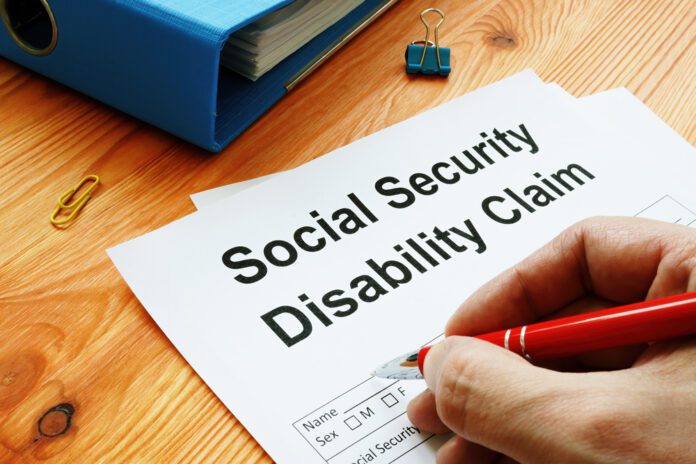1-in-4 U.S. adults have a disability that impacts major life activities, according to the Centers for Disease Control (CDC). People with disabilities constitute the nation’s largest minority group. And thanks to COVID-19 – and more specifically “long COVID” – many people are now unexpectedly entering the disability community.
Long COVID is more common than some realize. Study after study (i.e. research by the University of California, University of Washington, Stanford Healthcare, Icahn School of Medicine at Mount Sinai, among others) have found that approximately 30% of patients who had COVID but did not need to be hospitalized later developed some form of long-haul COVID.
What is Long COVID?
The U.S. Department of Health & Human Services (HHS) cites that: “Although many people with COVID-19 get better within weeks, some people continue to experience symptoms that can last months after first being infected, or may have new or recurring symptoms at a later time. This can happen to anyone who has had COVID-19, even if the initial illness was mild. People with this condition are sometimes called long-haulers. This condition is known as long COVID.”
Long COVID symptoms often include persistent pain, fatigue, brain fog and a worsening of symptoms after even minimal activity, according to Solve Long Covid Initiative, an effort of Solve M.E., a nonprofit that serves as a catalyst for critical research into diagnostics, treatments and cures for post-infection diseases. This is in addition to those who experienced other COVID complications, like stroke, organ failure and various ventilator-related issues.
As of July 2021, long COVID, also known as post-COVID conditions, can be considered a disability under the Americans with Disabilities Act (ADA). A person with long COVID, according to HHS, has a disability if the person’s condition or any of its symptoms is a “physical or mental” impairment that “substantially limits” one or more major life activities.

New Research Explores Economic, Social and Workplace Impact of Long COVID
A new whitepaper titled Long COVID’s Impact on Adult Americans: Early Indicators Estimating Prevalence and Cost was published in April 2022 by Solve Long Covid Initiative. The whitepaper uses mathematical models to estimate the magnitude of this public health crisis on national and state levels.
“Long COVID’s impact is profound on all facets of life, work and community, and will only intensify in the months and years ahead,” says Oved Amitay, president and CEO, Solve M.E. “We have multiple problems to solve — employees who are unable to work full-time are facing the loss of health insurance coverage and other vital benefits. Organizations with outdated disability policies must revise them to accommodate the unpredictable nature and lack of timelines for chronic illness recovery. Local, state and federal leaders need to establish effective programs to support people facing these life-changing conditions.”
Among the key paper findings, it is estimated that:
- 22 million U.S. adults are living with long COVID – close to 7% of the population.
- 7 million are experiencing disabling long COVID – 2.3% of the population.
- As of January 2022, the cumulative cost of long COVID is estimated at more than $386 billion. [This estimate includes lost wages, lost savings and medical expenses incurred by individuals. It does not include costs incurred by businesses or government agencies.]
- California has the highest number of cases of all 50 states, with more than 2.4 million long COVID cases and 817,000 disabling long COVID cases. Cumulative personal financial burden is estimated at $43.2 billion.
- When looking at the proportion of a state’s population that is afflicted, Rhode Island tops the list, with an estimated 9.5% and 3.1% of residents suffering from long COVID and disabling long COVID, respectively.
- Complete state statistics may be found here.
“We defined disabled by long COVID as 10% of those infected by SARS-CoV-2 consistent with current research and reports from patients,” whitepaper co-author Emily Taylor tells AmeriDisability. Taylor, who serves as Solve M.E.’s VP of Advocacy and Engagement, further explains, “Disabling long COVID (DLC) in this paper is defined as a patient’s experience of disabling or disruptive symptoms following a suspected or confirmed case of COVID-19. Those experiencing DLC are unable to fully function at their pre-infection level and the experience of lingering or new symptoms results in disability or reduced ability to work.”

The Battle for Disability Benefits
Even though long COVID can now be considered a disability under ADA, those impacted are struggling to obtain disability insurance (DI), among other hurdles. The U.S. Social Security Administration (SSA) says that it received 23,000 applications since the beginning of the pandemic that mention long COVID in some way, which is less than 1% of its annual applications. However, long COVID-related numbers may be significantly undercounted for a variety of reasons, such as lack of clear medical guidance, uncertainty surrounding latent illness cause and effect, difficulties with criteria/documentation, lengthy application processes and high rejection rates.
The Washington Post recently reported that many long COVID patients are indeed too ill to work yet are having “difficulty meeting the evidence threshold insurers’ demand: objective medical test results showing an inability to perform work.” So, some applicants are seeking much-needed assistance from companies like Allsup, a nationwide provider of Social Security Disability Insurance (SSDI) representation and veterans’ disability appeals services. That’s because, according to Allsup, about 64% of new SSDI applicants will have their initial application denied and many will then encounter a lengthy appeals process.
“A 2021 study by National Bureau of Economic Research suggested that having an SSDI representative assist you with your application improves the likelihood of an approval by 23%,” says T.J. Geist, Allsup Principal Advocate. “As the study indicates, this is often because an experienced representative understands the SSA’s medical listings and how to thoroughly document that someone meets these listings.” And oftentimes, individuals who are experiencing severe medical issues find it a tall task to advocate for themselves, notes Geist. “Sometimes claimants are not honest enough with themselves about the struggles they’re experiencing.”
It’s quite possible that long COVID has likely increased disability insurance applications well beyond the low percentage cited, but identifying accurate statistics is tricky. “I believe this, currently, is one of the many long COVID voids,” says Philippa Dunne, Co-Editor at TLRAnalytics and another co-author of the new whitepaper.
“Those disabled by long COVID are facing many of the same hurdles people with other post-infection illnesses have faced over the years. That includes the challenges of having an invisible illness with multiple definitions and high levels of misinformation. Specifically, the symptom “post-exertional malaise” tends to befuddle disability approval processes,” Taylor says. “This symptom occurs when patients experience a “crash” or worsening of symptoms between 24-48 hours after physical or mental exertion. It’s hard to measure, hard to quantify and often ignored, despite having a devastating impact on a patient’s quality of life,” she adds.
Geist shares similar concerns. “Allsup is seeing dozens of claims monthly specifically citing COVID-19 as a factor. Keep in mind that someone may be applying for SSDI benefits with an existing disability and then experience severe debilitating effects after exposure to the coronavirus. This means the virus has complicated pre-existing issues and worsened them, which could have occurred in connection to lung or other organ damage, neurological or brain-related disease, and other medical issues. So the primary disability may not be listed as long COVID,” he explains.

What Long Haulers Need to Know
Geist believes that individuals who experience long-haul symptoms need detailed documentation of what they are experiencing and how it is a direct result of COVID. He suggests that patients maintain constant communication with their medical professionals to track symptoms and health conditions with proper health filings, including tests, screenings and verbal reports.
“To qualify for SSDI benefits, it is important to document the medical condition’s effects including preventing someone’s ability to work and conduct daily activities,” Geist says. And time is a major factor. “The SSDI program requires that they have a severe medically determinable impairment, documented in medical records, that has prevented them from working or will prevent them from working for at least 12 months.”
Continuing the Conversation
Unfortunately, it seems that SSA may have major hiccups to address. According to Geist, Social Security does not currently have a medical listing for COVID-19-related disabilities and, instead, provides general guidance for disability examiners to follow. “We are monitoring how the medical community is addressing long COVID symptoms and determining whether or not a health condition reaches disability status. All things considered, components in this process continue to be fluid and evolving, which can contribute to inconsistency and delays,” he says.
The coronavirus pandemic is, of course, far from over and seemingly everchanging. Yet people with certain disabilities, chronic conditions and weakened immune systems remain at higher risk for severe illness or death. That’s why disability advocates, such as the American Association of People with Disabilities, continue to proactively encourage the CDC and other leading health authorities to keep high-risk populations a priority for both prevention and treatment of COVID. Some disability organizations caution that the CDC’s recent relaxation of restrictions may be premature and, consequently, result in yet another spike in COVID cases.
Expert panel discussions were held in early April 2022 to explore the whitepaper’s findings, as well as the financial, social and emotional impact of long COVID and disabling long COVID. [Here are recording links to session 1 and session 2.] Panelists covered how workplaces and communities are facing challenges, and what support may be needed to provide adequate support. The Solve Long Covid Initiative will host its next program, in partnership with the Global Interdependence Center, on May 19, 2022. Click here for event details.
Editor’s Note: Information pertaining to COVID-19 continues to develop. AmeriDisability strives to provide up-to-date information; however, information may change after our publish date.






